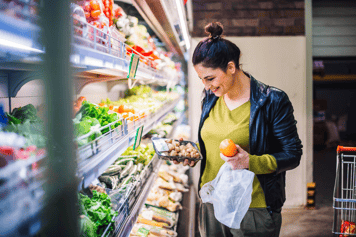A balanced diet includes nourishing sources of protein, fat, and carbohydrate. Here are some examples of how to find healthy sources of all three.
Protein.
Choose protein sources that are nutrient-rich and low in saturated fat and calories, such as:
- Lean meats
- Seafood
- Beans
- Soy
- Low-fat dairy
- Eggs
- Nuts and seeds
It’s a good idea to change up your protein foods. For instance, you could have salmon or other fish that’s rich in omega-3s, beans or lentils that give you fiber as well as protein, walnuts on your salad, or almonds on your oatmeal.
How much protein are you getting? Here’s how many grams of protein are in these foods:
- 1/2 cup low-fat cottage cheese: 14g
- 3 ounces tofu, firm: 9g
- 1/2 cup cooked lentils: 9g
- 2 tablespoons natural-style peanut butter (7g) or almond butter (6.7g)
- 3 oz skinless chicken breast: 26g
- 3 oz fish fillet (depending on type of fish): 17-20g
- 1 ounce provolone cheese: 7g
- 1/2 cup cooked kidney beans: 7.7g
- 1 ounce almonds: 6g
- 1 large egg: 6g
- 4 ounces low-fat plain yogurt: 6g
- 4 ounces soy milk: 5g
- 4 ounces low-fat milk: 4g Carbs and Fat
Carbs and fats.
While you’re adding protein to your diet, you should also stock up on “smart carbs” such as:
- Fruits
- Vegetables
- Whole grains
- Beans and legumes (both also have protein)
- Low-fat milk and yogurt (both have protein
Also try healthy fats, such as:
- Nuts and natural-style nut butters
- Seeds
- Olives
- Extra virgin olive oil and avocado oil
- Fish
- Avocado
To help manage your appetite, it also helps to split your daily calories into four or five smaller meals or snacks.
Table of contents



